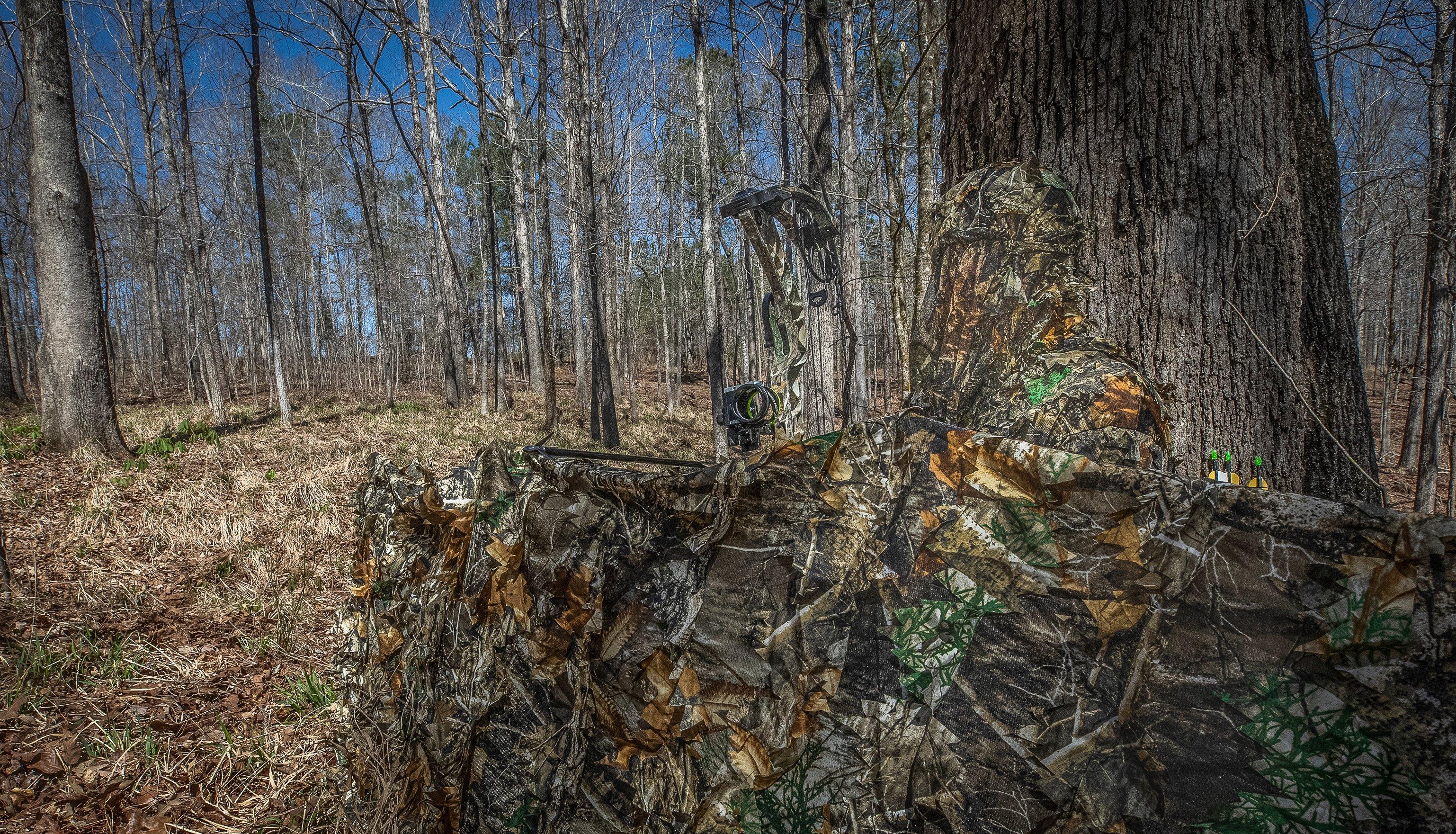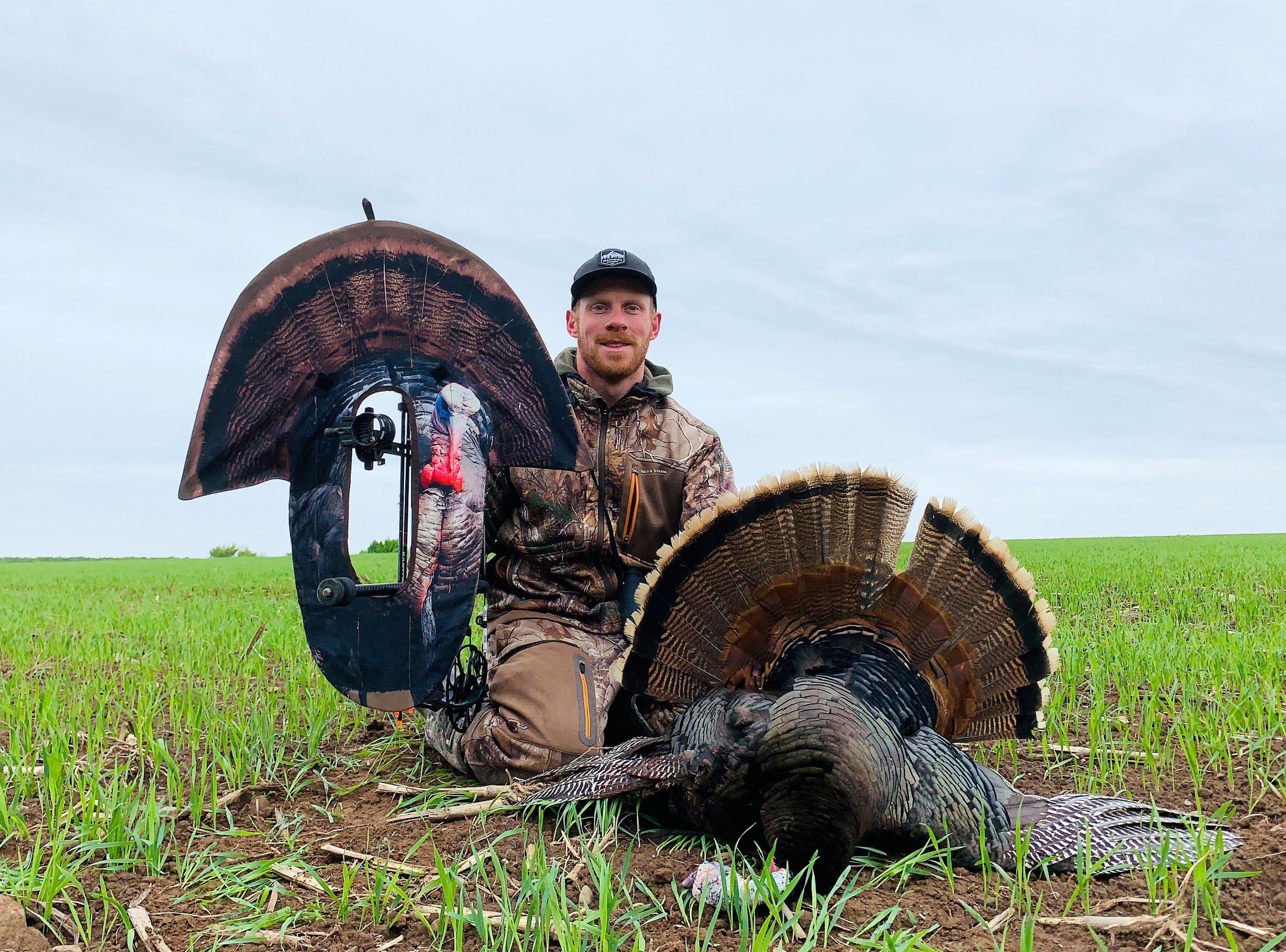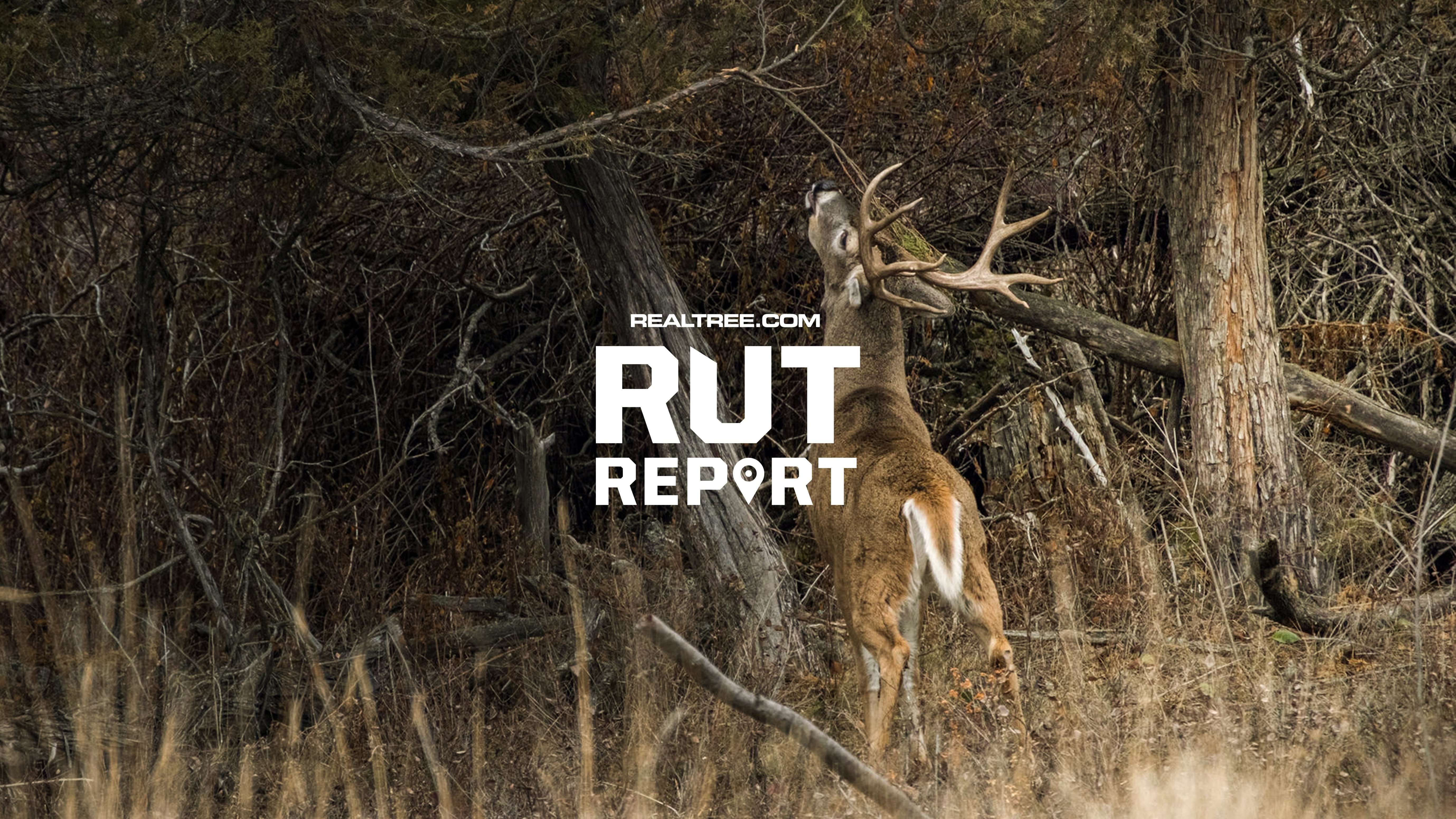You’ve got a tom strutting at 30 yards. Should you take the shot or let him get closer?

A strutting gobbler appears deceivingly huge. Take the feathers away, and he’s about the size of a watermelon, and his kill zone is about the size of a baseball. That’s a tough target, especially at distances beyond 25 yards. Image by John Hafner
In my overconfident teen years, I bow-killed two spring gobblers beyond 40 yards — one at 43, the other at 45. Both collapsed in their tracks, and the well-placed arrows didn’t hit their marks by chance. Back then, I shot my bow incessantly without adulthood distractions. However, I look back on those shots and consider them less than ethical.
Today, I don’t attempt shots like that at turkeys. In fact, it’s been years since I’ve bow-killed one beyond 15 yards. Just like every other game animal we chase, turkeys deserve our best. So, what is a responsible maximum distance for shooting turkeys with a bow? There are a few considerations that determine this, but even when everything is just right, we still must have a cutoff. We must have the willpower to say, “I can make that shot, but I’m going to pass because I’ve set my limit.”
To that end, let’s discuss a few points around shot distance on turkeys before I conclude with what I believe is too far. Follow along.
Small Kill Zone
A strutting gobbler appears deceivingly huge. How could you possibly miss? Well, strip the feathers away, and the bird’s entire body is comparable in size to a watermelon. I can hit a watermelon from 100 yards with my bow. But a turkey’s kill zone — the heart and lungs — is about the size of a baseball. Now, some folks aim for the top of the drumsticks, which immobilizes the bird and causes a bleed-out, but a tom’s lights go out fastest when his lungs or heart are sliced. That’s my target.
So, at what distance can you hit a baseball every time, while dressed in hunting clothes and shooting from a ground blind or seated against a tree? Oh, and don’t forget to add a spiked heart rate into the mix. Suddenly, what appears to be a very large target is unbelievably small. In other words, hitting the watermelon in no way guarantees a clean kill. You have to hit the baseball.
An Always-Changing Target
Turkeys rarely stop moving. Not only is a walking turkey an extremely difficult target with archery gear, but even turkeys that aren’t walking are constantly shifting angles as they strut or attack a jake decoy. Tracking of all of those movements while you’re aiming is almost impossible. Even a couple of degrees of angle change unaccounted for can turn a deadly hit into a marginal one.
Also, a strutting bird presents a different target than a non-strutting bird. So, you might be prepared to shoot a strutting bird as he’s coming in, but then if he smells fish at the last second and pops out of strut, you’re suddenly faced with a totally different target presentation. Simply put, turkeys are almost always moving and shifting angles. That’s why long shots, even if you have the skill to make them, aren’t ethical.

Bowhunting turkeys is all about a close-up experience. If you want to shoot farther than 25 yards, take a shotgun. Image by Bill Konway
Bow Poundage and Broadhead Setup
Turkeys are often dismissed as an animal that can be nabbed with minimal draw weight. At certain angles and at close range with a sharp broadhead, it’s true that it takes little draw weight to do the job. However, drumsticks and wing joints have prevented pass-through shots with my 75-pound Mathews, so just imagine the results with a 35-pound bow. Pound for pound, turkeys are tough as nails.
With ultra-lightweight setups, I suggest not shooting beyond 15 yards. Further, most who’re shooting such minimal draw weight are youths, and they should get used to shooting at birds in the decoys, not birds hung up at 30 yards. Powerful setups like mine will do the job at any distance given great arrow placement, but weaker setups have greater limitations.
Let Him Come Closer
When shotgun hunting, many turkey hunters shoot the moment he raises his head inside 45 yards. You can’t bring that same mentality to bowhunting. If the bird is coming closer, let him come. Why shoot 20 yards when you can wait a few more seconds and nail him at 10 to 12 yards when he reaches the decoys? Don’t rush. Cleaner opportunities come from being patient.
The Bottom Line, Regardless of Skill
We’ve covered some ins and outs of how different scenarios can affect shot distance while bowhunting turkeys. Last, I want to discuss skill. Some folks have enough trouble putting down a tom at 10 yards in the decoys and have no business shooting beyond that. Others are proficient archers to 40-plus yards. But even if you’re skilled with a bow, a line must be drawn in the sand, and the line must be informed by ethics.
I’ve taken dozens of toms with my bow. In doing so, I’ve seen just about every possible outcome, and that has helped me to draw some conclusions regarding shot distance. I believe that 25 yards should be the limit for the most skilled and accurate archers, and that those who’re less proficient should shoot no farther than 15 to 20 yards. Beyond that is asking for trouble. If you don’t have the patience to wait for a close, sure-thing opportunity, hunt with a shotgun .
What About Crossbows?
These are becoming popular tools for many turkey hunters, and the most advanced ones of today can shoot softball-sized groups at 100 yards from a bench. Forty-yard shots can seem like a cakewalk. Still, even crossbow hunters are best to keep it close on turkeys. You’re still shooting one projectile, and you still have to nail that baseball-sized target that’s usually moving. If you have a solid rest on a bipod or tripod and can squeeze the trigger without flinching, 30- to 35-yard shots are ethical with a crossbow — but don’t push it. Use your head, know your limits, and remember that 15 yards is still better.

Darron McDougal arrowed this gobbler from about 12 yards as it posed next to his jake decoy. He hasn’t shot a tom beyond the decoys in years. Image by Darron McDougal
The One Time When You Should Shoot Long
There is one exception to the 25-yard limit — when you’re trying to finish a wounded bird after your first arrow was less than perfect. This will happen if you bowhunt turkeys long enough. In this situation, whether it’s 30 yards or 100, shoot if you have any chance of hitting the turkey.
I was faced with that situation this past spring when I shot a tom in my decoys at 10 yards. I struck the bird at the base of the neck as he strutted facing toward me. Rather than penetrate the neck and enter the body, my broadhead glanced off the neck on impact and didn’t enter the body cavity. It was great placement, but the glancing effect altered the arrow’s course. The blood loss was substantial, but the gobbler still made it to 79 yards before stopping. I nocked another arrow, ranged him and dialed my sight to 79 yards. I settled in and sent a long-range arrow to finish what I started.
Based on the bird’s alertness, I believe it would’ve taken my first arrow quite some time to seal the deal, but by putting another one in him, I didn’t have to face a perplexing tracking job. If that encounter proves anything besides the importance of a back-up arrow, it’s that the unplanned can happen even with a close-distance shot, therefore reiterating the importance of limiting shot distance.
Final Remarks
When you go afield for turkeys with your bow this spring, don’t take ridiculous shots. Even if you’re a great shot with the bow, you must remember that turkeys have a small kill zone that’s usually moving. There is no practice you can do that will perfectly replicate this, and that’s why keeping those shots inside 25 yards is always best.
(Don’t Miss: ADVANCED TURKEY TALK)












